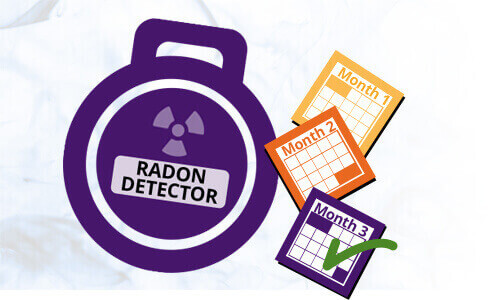
By Barb McKinnon on 2019-01-11
(from the website of Breathe – the Lung Association (Canada)
November is Radon Action Month, which means you may hear about this silent killer more than usual in the coming days. Many people have heard of the gas but it is still hiding in the shadows. Given that it is the second leading cause of lung cancer (first is tobacco), we think that more needs to be known about what it is and how to prevent it.
A look back in history
We have come a long way from the early 2000s when the Lung Association advocated on behalf of Canadians to lower the guidelines for indoor exposure to radon gas. In 2007 the Government lowered the guideline from 800 to 200 Bq/m3. This was an important milestone that enabled the government to create radon awareness programs and work with radon specialists to create best practice guidelines for radon measurement and mitigation.
Although many people are now aware of radon, it remains the second leading cause of lung cancer – following tobacco. So, our work is far from finished.
What is radon and what can you do about it?
Radon is a naturally occurring gas that comes from the ground. It comes from the natural breakdown of uranium in soil, rock and water. Radon gas escapes from the ground into the air outside. When radon mixes with the air outside, it’s not a problem: the air outside dilutes the amount of radon. But when radon seeps into a closed-in space like a house, it can be harmful. The radon gas can become trapped inside. It enters the building from the basement and accumulates inside. Exposure can cause lung cancer. The risk of cancer increases with the level of radon and the length of time you are exposed. The risk of lung cancer is even higher if you also smoke. Every home, business and school may have elevated radon levels but the level can only be determined by testing because you cannot see, taste or smell it.

That sounds scary but the good news is that it is easy to test using inexpensive long-term radon test kits that can be bought at many home building supply stores, many of the Lung Associations and through radon specialist companies. The Lung Association recommends that if your radon level is over 150 Bq/m3 you fix your basement. While radon levels can be lowered a small amount by filling cracks and sealing gaps in your basement, the best approach is to hire a radon technician to install a sub-floor depressurization system. Installation can cost approximately $2,000 to $4,000, depending on the construction of your home. If you are building a new home you should install the system when you build as it costs far less than putting one in at a later date.
Be alert
The Lung Association recommends that if you have a cough lasting more than 3 months, if you have smoked, or if you have lived many years in a house that has high radon levels you should ask your health care provider for a low-dose CT scan to check for lung cancer. If lung cancer is caught early, your chances of long-term survival are much better.
Check your home for radon. Breathe easier.
More information:
https://www.lung.ca/lung-health/air-quality/indoor-air-quality/radon


